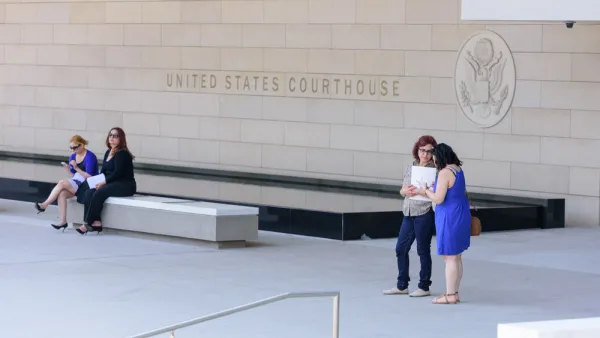The Census Bureau may revise questions about race and ethnicity on the 2020 survey to improve the accuracy of data on minority groups. Recent data shows a difference between how the government identifies such groups and how they identify themselves.
"For many years, the accuracy of census data on some minorities has been questioned because many respondents don't report being a member of one of the five official government racial categories: white, black or African-American, Asian, American Indian/Alaska Native and Pacific Islander," says Corey Dade. If respondents don't select a category, the Census Bureau assigns them a race based on their neighborhood demographics.
The accuracy of census data is important because the information is used in political decision-making such as enforcing civil rights laws, redrawing state legislative and local school districts, and reapportioning congressional seats. "The strong Latino growth found in the 2010 census guaranteed additional seats in Congress for eight states," says Dade, as an example. Revisions to census questions could improve data reliability, and officials are considering eliminating the Hispanic origin question, asking Asians to list their country of descent, and combining questions for multiracial people.
Latino leaders have voiced their opinion that eliminating the Hispanic origin question could create confusion, but the 2010 survey showed that the question already confused Latinos because many think of "Hispanic" as a race and not an ethnicity. "Broadly, the nation's demographic shifts underscore the fact that many people, particularly Latinos and immigrants, don't identify with the American concept of race," says Dade. He continues, "Even the terms 'Latino' and 'Hispanic' are met by many with ambivalence."
A 2011 survey by the Pew Hispanic Research Center found that only 24 percent of adults use those terms to describe their identity and prefer to identify themselves by their family's country of origin. The Bureau's research for the next census "is expanding our understanding of how people identify their race and Hispanic origin. It can change over time," said Karen Humes, assistant division chief for Special Population Statistics.
FULL STORY: Census Bureau Rethinks The Best Way To Measure Race

National Parks Layoffs Will Cause Communities to Lose Billions
Thousands of essential park workers were laid off this week, just before the busy spring break season.

Retro-silient?: America’s First “Eco-burb,” The Woodlands Turns 50
A master-planned community north of Houston offers lessons on green infrastructure and resilient design, but falls short of its founder’s lofty affordability and walkability goals.

Delivering for America Plan Will Downgrade Mail Service in at Least 49.5 Percent of Zip Codes
Republican and Democrat lawmakers criticize the plan for its disproportionate negative impact on rural communities.

Test News Post 1
This is a summary

Test News Headline 46
Test for the image on the front page.

Balancing Bombs and Butterflies: How the National Guard Protects a Rare Species
The National Guard at Fort Indiantown Gap uses GIS technology and land management strategies to balance military training with conservation efforts, ensuring the survival of the rare eastern regal fritillary butterfly.
Urban Design for Planners 1: Software Tools
This six-course series explores essential urban design concepts using open source software and equips planners with the tools they need to participate fully in the urban design process.
Planning for Universal Design
Learn the tools for implementing Universal Design in planning regulations.
EMC Planning Group, Inc.
Planetizen
Planetizen
Mpact (formerly Rail~Volution)
Great Falls Development Authority, Inc.
HUDs Office of Policy Development and Research
NYU Wagner Graduate School of Public Service



























